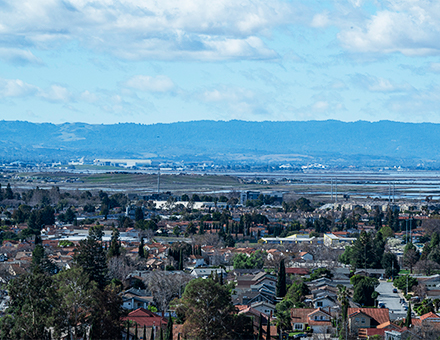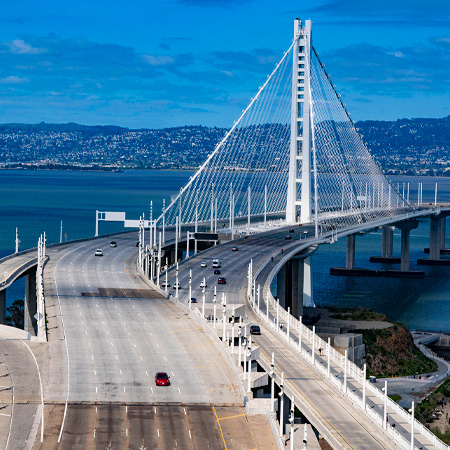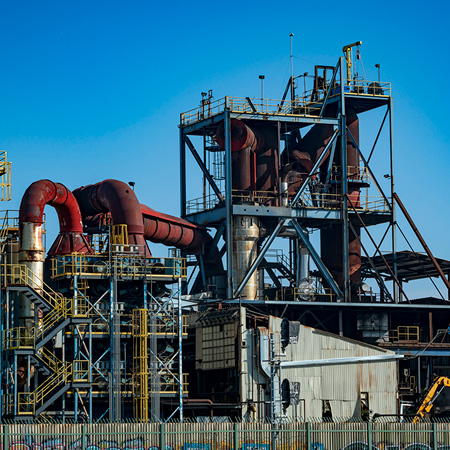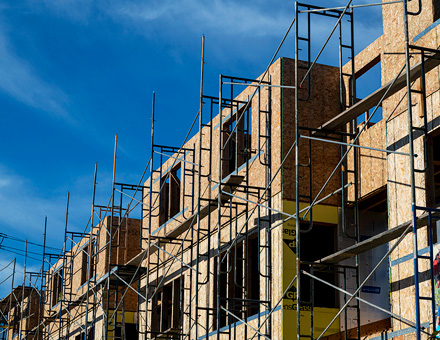Furthering
AIR QUALITY
Protections
scroll to begin

Comprehensive
Milpitas
Odor Study
The Air District launched a study to identify compounds from waste facilities producing odors that impact the Milpitas area. The study’s goal is to determine the contribution, variability, frequency and concentration level of odors from these facilities to inform future actions. The study is being conducted in partnership with South Bay community members to address community concerns and educate the public about sources of odors and reduction actions.

Wildfire
AIR QUALITY
Response Program
the unprecedented 2020 wildfire season triggered 30 consecutive spare the air alerts — the longest streak of poor air quality on record — caused by 5 of the 6 largest wildfires in california history.
The Wildfire Air Quality Response Program, established in 2019, continued to strengthen and evolve in 2020. Through the program, the Air District works with local and state partners to create clean air centers to provide improved air filtration systems to those most vulnerable, explore new regulatory and legislative actions, direct funding to implement a Wildfire Prevention Chipping Pilot Program, and initiate a grant program for home air filtration units. A robust public messaging plan has helped raise awareness on the health impacts of wildfire smoke and prepare residents for future wildfires.
Study on Fine
particulate matter
Impacts from Refineries
Astudy was conducted to model the level of fine particulate matter (PM2.5) impacts from the Chevron refinery in Richmond on the surrounding community. Models demonstrated the spread of the PM2.5 emissions from the refinery and demographics of those most impacted. A second study is being conducted for the PBF (formerly Shell) refinery in Martinez. Data gathered from these studies will inform rule development efforts underway to reduce health burdens on the community from refinery operations.

Flex Your
Commute
Program
The shelter-in-place order that began in March demonstrated the air quality and traffic benefits that remote work can bring. The Air District and Spare the Air are encouraging employers to make a Flex Your Commute Pledge to adopt ongoing employee options for remote work, if work requirements allow. Remote work has the additional benefits of employee retention and work-life balance, and employer savings on commercial real estate.

The air district’s remote work policy clearinghouse includes information on the mobility, air quality and health benefits of remote work for elected officials, private businesses and public agencies. it provides a complete remote work toolkit featuring resources and guidance, model teleworking agreements, and information on equity considerations and ergonomics.
How Air Monitors Work
Spare the Air
program
Adapts to the “New Normal”

new spare the air ad campaigns were launched in 2020: one promoting remote work to lower emissions from commute traffic and another stressing the negative health impacts of wood burning pointing out that all smoke is unhealthy to breathe — whether from cigarettes, wildfires or fireplaces.
In response to Covid-19 restrictions on public events, the Air District developed an animated, interactive virtual “booth” that can be linked to any event marketplace or landing page. Visitors to the “booth” can access information, resources and collateral that are normally available at in-person events. Due to the unprecedented wildfire season, 52 Spare the Alerts were issued in 2020 — 43 of which were triggered by wildfire smoke. Spare the Air social media pages had over 5 million impressions in 2020 and gained 4,556 followers across all platforms to reach a total following of over 29,500.
First-of-its-Kind Rule
Reduces
Toxic Air Pollution
In order to comply with the most stringent toxic air pollution regulation in the nation, local industries are taking early action to further reduce their health impacts on Bay Area residents. The adoption of Regulation 11-18 in 2017 has already resulted in reduced emissions of toxic air contaminants at facilities through preemptive risk reduction projects, including emissions inventory correction and validation, process changes and abatement measures.
By Fall 2020, the Air District initiated health risk assessments for the majority of facilities that show the most potential for toxic air pollution impacts, with the remaining facilities scheduled to be completed in the subsequent 12 months. Facilities that exceed the rule’s health risk action level will be required to submit a risk reduction plan, which outlines actions the facility will take to reduce emissions below the action levels.

Building
Decarbonization Program
Atop priority of the Air District’s Climate Protection Program is to accelerate the transition from natural gas to electricity in buildings. The Air District’s Building Decarbonization Program includes the Clean Building Compass, an online clearinghouse of policy resources for local governments developed through a partnership with the Building Decarbonization Coalition and the Bay Area Regional Collaborative. The Air District is also participating in a statewide public education and marketing campaign called “The Switch Is On” that brings the message of a better life through electrification and exploring potential rulemaking to limit the sale of natural gas appliances.

Inside an Asbestos Inspection
Diesel Free
BY ’33
The Air District hosted a series of webinars on technology alternatives, funding opportunities and health impacts of diesel pollution that attracted 300 participants. The program also conducted a needs assessment to address barriers to achieving the program’s goal. Nearly 100 Bay Area community leaders and elected officials signed commitment letters to meet the program’s challenge.
Lawsuit Challenging
Trump’s rollback
of Clean Vehicle Stantards
on may 28, the south coast air quality management district filed a petition challenging the u.s. epa and national highway traffic safety administration’s rollbacks to the safer affordable fuel-efficient vehicles rule, known as the safe rule part two, initiated by the trump administration.

The rollbacks will result in the release of additional air pollutants and greenhouse gas emissions from 2021-2026 model passenger vehicles and light-duty trucks and will weaken fuel-efficiency standards established in 2012. The rollbacks establish vehicle emission standards that will increase in stringency by only 1.5 percent per year from MY 2020 levels over MYs 2021-2026, compared to more stringent standards promulgated by the Obama administration that required 5 percent annual increases in stringency of fuel economy and greenhouse gas emissions standards. The petition adds to existing multi-party litigation that the Air District is participating in challenging Part One of the SAFE Rule. The SAFE Rule is the Trump administration’s revocation of the California waiver for greenhouse gas and zero-emission vehicle standards, which attempts to strip the state of its ability to set its own greenhouse gas-related emission requirements.